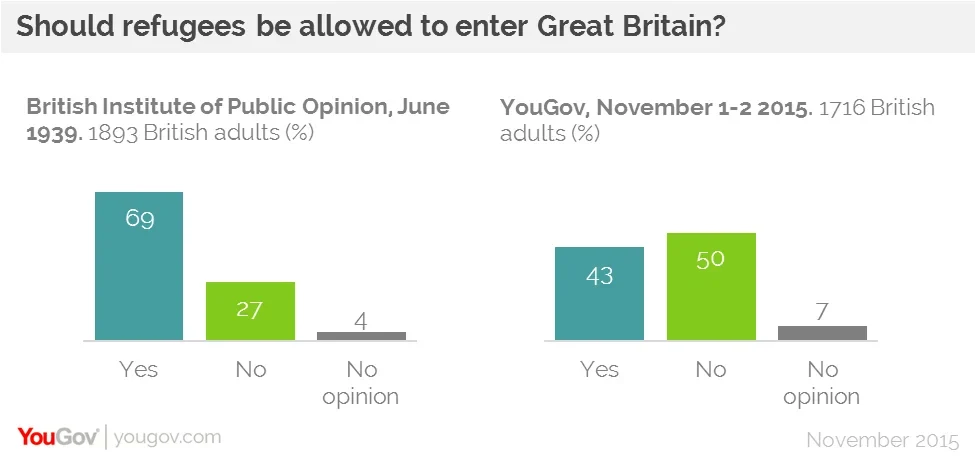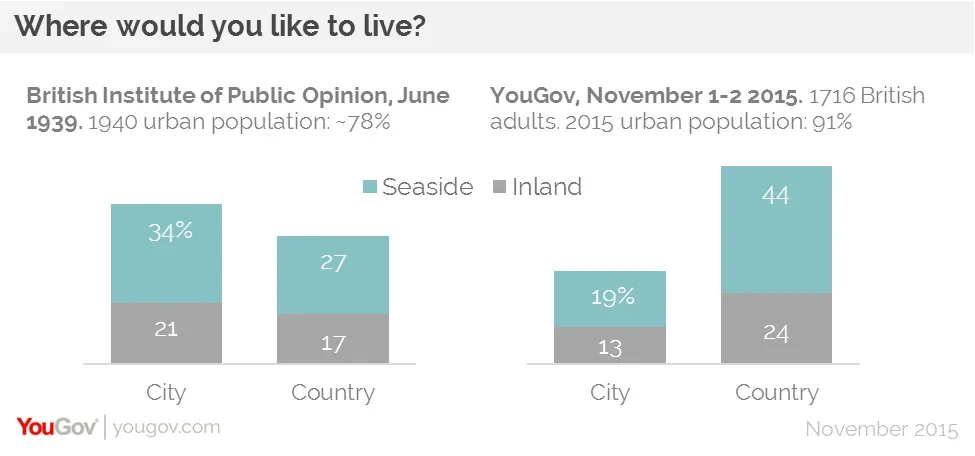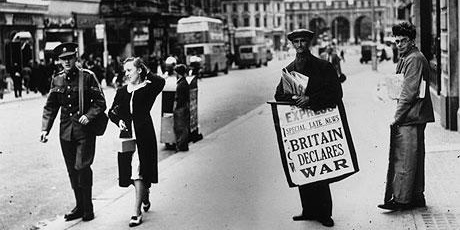The changes in public opinion since June 1939 aren't exactly as you'd expect: in the past 76 years we have become less welcoming to refugees and less enamoured with our cities
YouGov has repeated a series of questions asked by the British Institute of Public Opinion, provided by Findmypast.co.uk, in the months leading up to and including the beginning of World War II, declared by the United Kingdom on Germany on 3 September 1939. As you would expect, the changes in the past 75 years are substantial - but not always in the direction you would expect.
Firstly, on the question 'should refugees be allowed to enter Great Britain', there was a strong majority in favour in 1939 - 69% to 27% - while today the figures are reversed when asked the same question - 43% in favour and 50% against. Of course the context in which the term ‘refugee’ is now understood is vastly different from that of 1939. Kindertransport, an organised rescue effort of predominantly Jewish children from Germany and other Eastern European countries had been underway since 1938, the issue of refugees was acute – limited to one conflict that threatened Britain itself – and general immigration was not the issue it has become.

Approximately 90,000 Jews were allowed to settle in Britain prior to 1940 along with 10,000 children in the Kindertransport programme, however this was considered inadequate by many and Neville Chamberlain’s policy of appeasement may have exacerbated the problem. David Cameron has said Britain will accept 20,000 refugees from Syria and its borders by 2020.
City life
Britain experienced a huge increase in its rate of urbanisation during the 20th century, increasing from around 78% at the outbreak of war to 89% in 2000. After continuing at around 78% until 1970, the rate sped up drastically during the 1970s – to 88% by 1980. Since the turn of the 21st century the rate has levelled off, but there has been a drastic shift in opinion.
The 1939 BIPO survey also asked where people would choose to live if they were in the position to do so. The majority said they would prefer a city life, either by the sea (34%) or inland (21%), but this has now reversed and an even larger majority now say they would prefer to live in the countryside, either by the sea (44%) or inland (24%).

Seaside urban dwellings during the 40s had a glamour that has since faded, and while cities have become more popular, this appears to be against our will. 2013 saw the highest outflow recorded of people in their thirties from London, and YouGov polling of Londoners this year found that 36% say they'd probably be better off somewhere else – it isn't really worth the effort and expense.
Other findings
Three of the other findings from the survey reveal no change in the direction of opinion since 1939, with small changes in intensity. On euthanasia, even 76 years ago a majority were in favour (63% supported giving those suffering from uncurable diseases the option of a voluntary death, 21% opposed), although support in 2015 is near-unanimous (80% support, 8% oppose). In a forced choice between communism and fascism, the results now are virtually unchanged (74% chose communism in 1939 and 78% do now, while the figures for fascism are 26% and 22% respectively). And asked if they could afford a week long holiday away from home in the summer 58% said they could in 1939, compared to 68% now.
Opinion has shifted on whether or not there is a life after death though. 48% believed in one in 1939 while 35% did not; now 36% believe in one and 49% do not.
In some cases the 1939 survey did not include a 'don't know' option. YouGov always tries to give people the option of saying they don't understand the question, however, so in some cases the results have been re-calculated to exclude 'don't knows', for comparison with the BIPO results.









